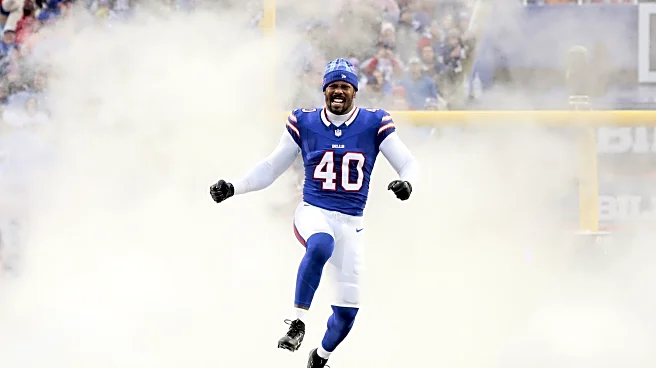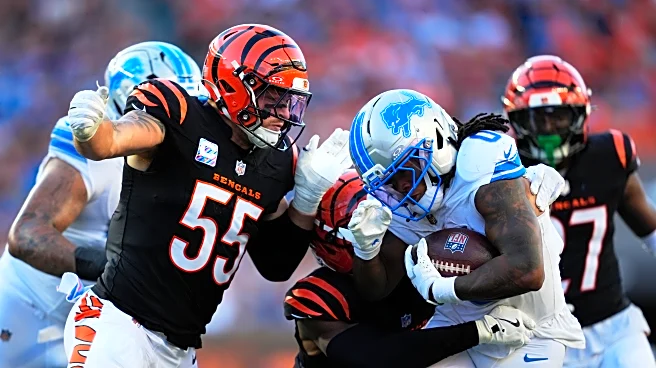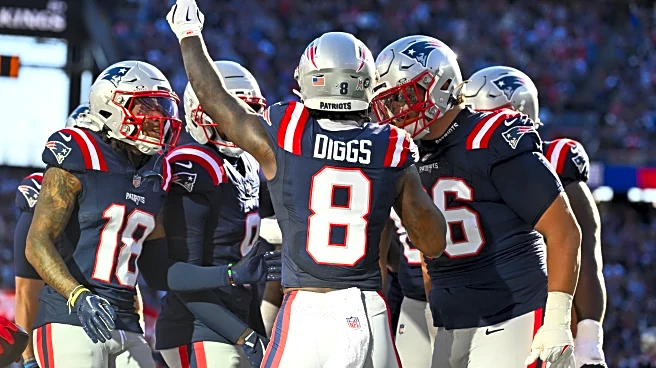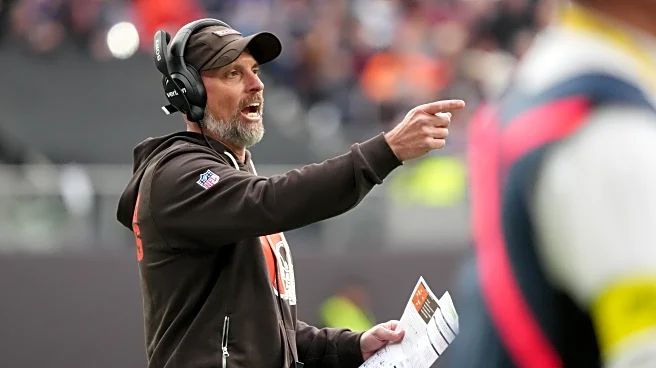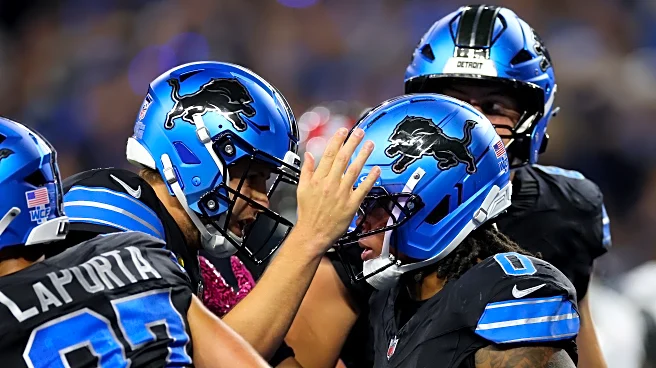What's Happening?
The Cleveland Browns have been active in the trade market as the NFL trade deadline approaches, making several strategic moves to improve their roster. Among the notable trades, the Browns have traded
cornerback Greg Newsome II and a 2026 sixth-round pick to the Jacksonville Jaguars in exchange for cornerback Tyson Campbell and a 2026 seventh-round pick. Additionally, the Browns have traded defensive end Joe Tryon-Shoyinka to the Chicago Bears and quarterback Joe Flacco to the Cincinnati Bengals. Despite these moves, backup quarterback Shedeur Sanders remains the Browns' QB2, although he has not received practice reps with the starting unit. The Browns are reportedly looking to acquire young talent to bolster their team, as they aim to turn around their 2-6 season record.
Why It's Important?
The Cleveland Browns' active participation in the trade market highlights their efforts to reshape their team dynamics and improve their performance in the ongoing NFL season. By trading key players like Greg Newsome II and Joe Flacco, the Browns are attempting to address weaknesses and build a more competitive roster. These moves could potentially impact the team's future performance and standings in the league. The decision to retain Shedeur Sanders as QB2 without practice reps suggests a strategic approach to developing young talent while maintaining experienced players in key positions. The Browns' actions could influence other teams' strategies as the trade deadline approaches, affecting the overall competitive landscape of the NFL.
What's Next?
As the NFL trade deadline approaches, the Cleveland Browns are expected to continue exploring opportunities to acquire young talent and strengthen their roster. The team's management may focus on identifying players who can contribute to immediate improvements and long-term success. The Browns' aggressive approach in the trade market could lead to further transactions, potentially involving other key players. Stakeholders, including fans and analysts, will be closely monitoring the team's decisions and their impact on the Browns' performance in the remainder of the season. The outcome of these trades will likely influence the team's strategy and objectives moving forward.
Beyond the Headlines
The Cleveland Browns' trade activities reflect broader trends in the NFL, where teams are increasingly leveraging trades to optimize their rosters and address performance gaps. The focus on acquiring young talent underscores the importance of building a sustainable team structure that can adapt to changing dynamics in the league. These trades also highlight the strategic considerations involved in balancing immediate needs with long-term goals. The Browns' approach may set a precedent for other teams looking to navigate the complexities of the trade market and enhance their competitive edge.








